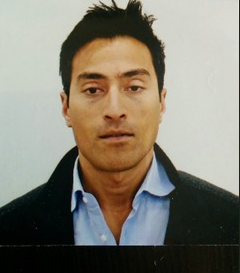Best Practices in Diagnostic Radiology by Dr. Andrew Gomes
Best Practices in Diagnostic Radiology by Dr. Andrew Gomes
Blog Article

The Growing Challenge of Diagnostic Reliability in Neurology
Precise analysis is in the centre of powerful medical care, yet neurological conditions remain once hard to identify with precision. Problems such as for example traumatic head incidents (TBI), Alzheimer's illness, and numerous sclerosis usually present with overlapping signs, raising the risk of misdiagnosis. This really is wherever advanced imaging methods, like Diffusion Tensor Imaging (DTI), perform a transformative role. Specialists in diagnostic radiology, including Dr. Andrew Gomes Sugar land tx, use DTI to chart brain activity and cellular disruptions with unprecedented accuracy.
Leveraging the Energy of DTI Engineering
Diffusion Tensor Imaging (DTI) analyzes the movement of water molecules in head muscle, providing step by step visualizations of white matter tracts. That level of insight assists radiologists discover also the tiniest architectural abnormalities in the brain, giving critical information for early analysis and designed treatments. Non-vascular interventional radiologists are individually positioned to control that technology, doing minimally intrusive imaging techniques to get a greater comprehension of neurological conditions. Dr. Andrew Gomes opinions this as a game-changing software in the fight against misdiagnosis.
Data-Driven Diagnostic Philosophy
Dr. Gomes stresses a data-driven method of radiology, advocating for the usage of advanced imaging systems like DTI to reduce diagnostic uncertainty. By meticulously analyzing patient information, Dr. Gomes ensures that every analysis is guaranteed by target, science-based evidence. He also highlights the possibility of integrating DTI effects with artificial intelligence techniques to further improve diagnostic accuracy. His responsibility to invention and patient-centered attention remains to shape the continuing future of diagnostic and non-vascular interventional radiology.
Connecting Technology and Patient-Centric Care
The integration of advanced neuroimaging tools like DTI not merely enhances the accuracy of diagnoses but also empowers healthcare companies to deliver more specific, patient-focused treatments. By detecting abnormalities early, radiologists enjoy a crucial position in increasing outcomes and minimizing the burden of neurological diseases. Experts like Dr. Andrew Gomes remain at the forefront of radiological developments, ensuring technology is used to its fullest potential in the ongoing vision to battle misdiagnosis and lift patient care. Report this page